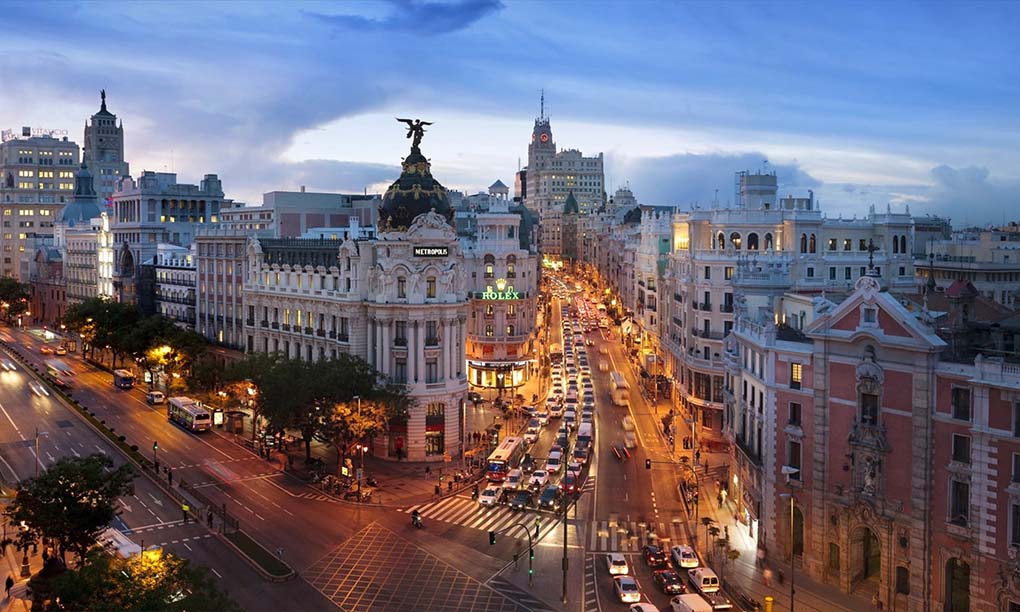Madrid, the vibrant capital of Spain, is a city brimming with history, stunning architecture, world-class art, delicious cuisine, and an exciting nightlife. However, for first-time visitors, there are a few common “tourist traps” to be aware of, such as pickpockets, hidden service fees in restaurants, and transportation issues. To help you navigate Madrid with ease and sophistication, here are 10 essential travel tips to ensure a smooth, hassle-free, and enjoyable experience.
1. Beware of Pickpockets! How to Stay Safe in Madrid?
Although Madrid is generally safe, pickpocketing is common in crowded tourist areas such as Puerta del Sol, Gran Vía, Plaza Mayor, and Mercado de San Miguel. Pickpockets often work in teams and use clever distraction tactics, including:
- Friendly chat scams: Someone approaches you for directions or conversation while their accomplice steals your wallet or phone.
- Public transport theft: Thieves take advantage of crowded metro or bus stops to slip their hands into your pockets or bag.
- Café & restaurant theft: Leaving your phone or wallet on the table, even in upscale restaurants, makes you an easy target.
How to Protect Yourself?
Use an anti-theft bag and wear it in front of you. Store valuables in inner pockets.
Be cautious when strangers approach you—especially those who seem overly friendly.
Never place your phone or wallet on a restaurant table, even for a moment.
Stay alert on public transport, especially when boarding or exiting trains and buses.
2. Avoid Overpriced “Tourist Restaurants” & Find Authentic Local Food
Many restaurants in Madrid’s tourist districts charge inflated prices for average-quality food. Places that seem “authentic” may actually be targeting tourists with higher prices, smaller portions, and mediocre flavors.
How to Avoid This Trap?
Avoid restaurants in Puerta del Sol and Plaza Mayor—they’re overpriced and touristy.
Be cautious of restaurants where staff actively try to lure customers in—this is often a sign of expensive and low-quality food.
Where to Find Authentic Spanish Cuisine?
Choose restaurants frequented by locals—if most diners are Spanish-speaking, that’s a good sign.
Look for “Menú del día” (daily menu)—a set meal with an appetizer, main course, dessert, or coffee for €10-15, offering great value.
Recommended Restaurants:
Casa Lucio – Famous for Huevos Rotos (broken eggs with potatoes).
Sobrino de Botín – The world’s oldest restaurant, renowned for its roast suckling pig.
Bodega de la Ardosa – A hidden gem for Iberian ham and authentic tapas.
3. How to Navigate Madrid Without Getting Overcharged for Transport?
Madrid’s public transportation is efficient and affordable, but there are pitfalls, especially with taxis.
Metro/Bus vs. Taxi
Metro & Bus:
- The metro is fast and cost-effective, with single tickets from €1.50 to €2.
- Buy a 10-trip ticket (Abono 10 viajes) for €12—it can be shared among multiple people.
- Airport to city: Take Metro Line 8 or the Airport Express Bus (cheaper than taxis).
Avoid Taxi Scams
Use only official white taxis with a red stripe—unlicensed taxis may overcharge.
Fixed price for airport transfers: €30 to central Madrid—insist on this fare if a driver tries to charge more.
Use ride-hailing apps like Uber or Cabify for fair and transparent pricing.
4. Embrace Spain’s Relaxed Pace – How to Handle Slow Service?
In Spain, meals are meant to be savored, and service is generally slower than in some other countries. Don’t expect instant attention!
Tips to Handle Slow Service Gracefully
Be patient—Spaniards enjoy long meals, and service is unhurried, especially during peak hours.
To call the waiter, politely say “Perdón” or “Por favor” instead of loudly yelling.
In Spain, waiters don’t bring the bill unless you ask—say “La cuenta, por favor” when you’re ready to pay.

5. Madrid Shopping Guide: Where to Get the Best Deals?
When shopping in Madrid, choosing the right location is crucial. In popular tourist areas such as Puerta del Sol and Plaza Mayor, souvenir and luxury item prices are often inflated, with some shops specifically targeting tourists with higher prices. Smart shopping strategies can help you save money while finding high-quality, reasonably priced products.
Gran Vía – This is a shopping paradise for Spanish fashion brands like ZARA, Mango, and Massimo Dutti. Prices here are typically 20%-40% cheaper than in other countries, especially during sales seasons in January and July, when discounts are even more attractive.
El Corte Inglés Department Store – Spain’s largest department store chain, offering luxury brands, cosmetics, home goods, and more. Tourists can get VAT refunds (IVA) on purchases, but the city center store (Puerta del Sol) can be very crowded. For a more relaxed shopping experience, consider visiting a less central location, such as the Castellana branch.
San Miguel Market & El Rastro Flea Market – If you’re looking for local souvenirs, such as ceramics, handicrafts, and vintage accessories, these markets are worth a visit. However, quality varies, especially at El Rastro, where some items may not be genuinely handmade. Be sure to inspect products carefully and don’t hesitate to bargain, as haggling is common.
Tip: Before buying luxury goods, compare prices on official websites or at multiple stores to ensure you’re getting the best deal. For tax refunds, you can choose Alipay or credit card refunds, and some brands even offer immediate tax-free purchases, saving you the hassle of post-purchase tax refund procedures.
6. How to Enjoy a Quality Flamenco Show Without Falling for Tourist Traps?
Madrid is famous for Flamenco, but not all performances are worth the money. Some shows cater exclusively to tourists, with high prices, mediocre dancers, and short performances.
How to Choose a Great Flamenco Show?
Avoid venues with aggressive promoters—quality shows don’t need street salesmen.
Check online reviews (TripAdvisor, Google) before booking.
Book in advance—good Flamenco venues sell out quickly.
Recommended Flamenco Venues:
Casa Patas – A beloved venue with top-notch dancers and musicians.
Corral de la Morería – The most prestigious Flamenco bar, offering dinner-show packages.
Tip: For a more immersive experience, visit Cardamomo Tablao, where you can meet the performers after the show.
7. Watch Out for “Fake Police” & Street Scams
Some scammers pretend to be police officers, asking to inspect your passport or wallet.
Real Spanish police will never randomly check tourists’ wallets—refuse and walk away.
8. Avoid Visiting Popular Attractions at the Wrong Time
Madrid is the cultural heart of Spain, home to world-class museums and historical landmarks. However, popular attractions often experience heavy crowds, especially during peak tourist seasons, with wait times of 1-2 hours. To make the most of your visit, it’s essential to plan your itinerary wisely.
Prado Museum (Museo del Prado) – One of Europe’s top art museums, known for its rich collection. Entry is free after 6:00 PM, but due to the large number of visitors, waiting times can exceed an hour. It’s recommended to buy tickets online in advance or visit in the morning to avoid peak crowds.
Royal Palace of Madrid (Palacio Real) – One of the best-preserved royal palaces in Europe, attracting numerous visitors. The busiest time is around 10:00 AM when tour groups arrive, leading to long queues. The best time to visit is between 2:00 PM and 4:00 PM when crowds are smaller, allowing for a better experience.
Additionally, some attractions offer advance reservations or fast-track entry, such as the Reina Sofía Museum. Booking tickets on the official website beforehand can help you skip long lines and optimize your sightseeing schedule.

9. Avoid the “Pre-Meal Charge” Trap for a Hassle-Free Dining Experience
In some tourist areas of Madrid, waiters may bring bread, olives, or small appetizers to your table before you order. While they may seem like complimentary treats, these items are often quietly added to your bill, typically costing €1-3 per person. This is a common “hidden charge” that many unsuspecting tourists encounter.
Always ask before eating: “¿Es gratis?” (Is it free?). If it’s not, you can decide whether to accept it.
Politely refuse if you don’t want it: “No, gracias.” (No, thank you). Some restaurants automatically place bread on the table, but if you don’t touch it, they usually won’t charge you. To be sure, always confirm beforehand to avoid unexpected charges when settling the bill.
Additionally, when paying, always check your bill carefully, especially in tourist hotspots, to ensure no extra items have been added. If you notice anything suspicious, politely ask the waiter: “¿Me puede explicar esta cuenta?” (Can you explain this bill to me?). This way, you can avoid unnecessary expenses and enjoy an authentic Madrid dining experience with confidence!
10. Tipping in Spain – What’s the Norm?
Tipping in Spain is not mandatory, unlike in the U.S. or UK.
How much to tip?
Casual restaurants & cafés: No tip or small change.
High-end restaurants: 5-10% is appreciated.
Check the bill first—some places include a service charge (“Servicio”), meaning no extra tip is needed.
Madrid is a city full of culture, history, delicious food, and passionate energy. By being aware of these common pitfalls, you can explore the city with confidence and elegance. Whether you’re indulging in local cuisine, admiring world-class art, or enjoying the vibrant nightlife, these tips will help you avoid unnecessary stress and experience the very best of Madrid!
Tags: Local Food, Safe in Madrid, Transport